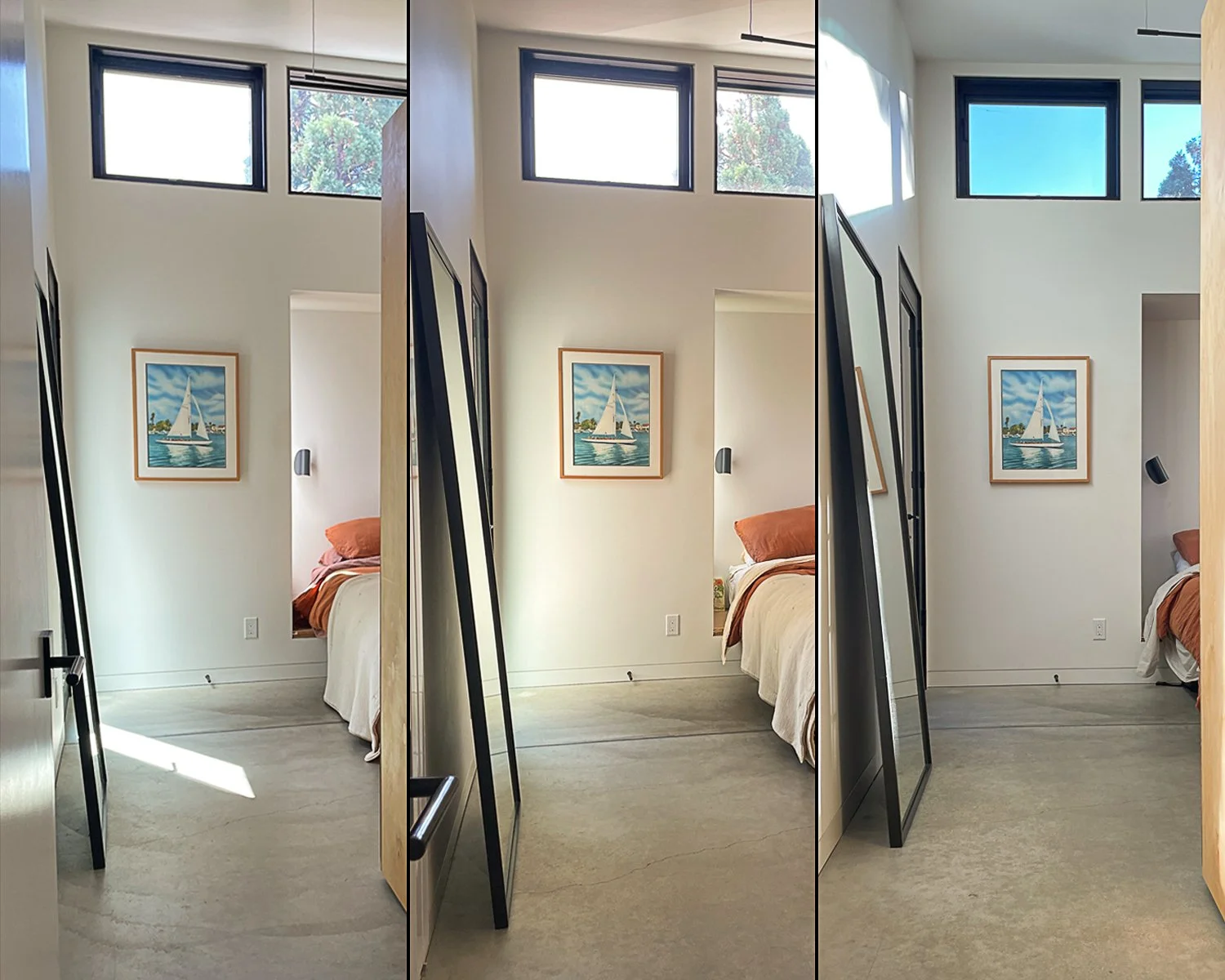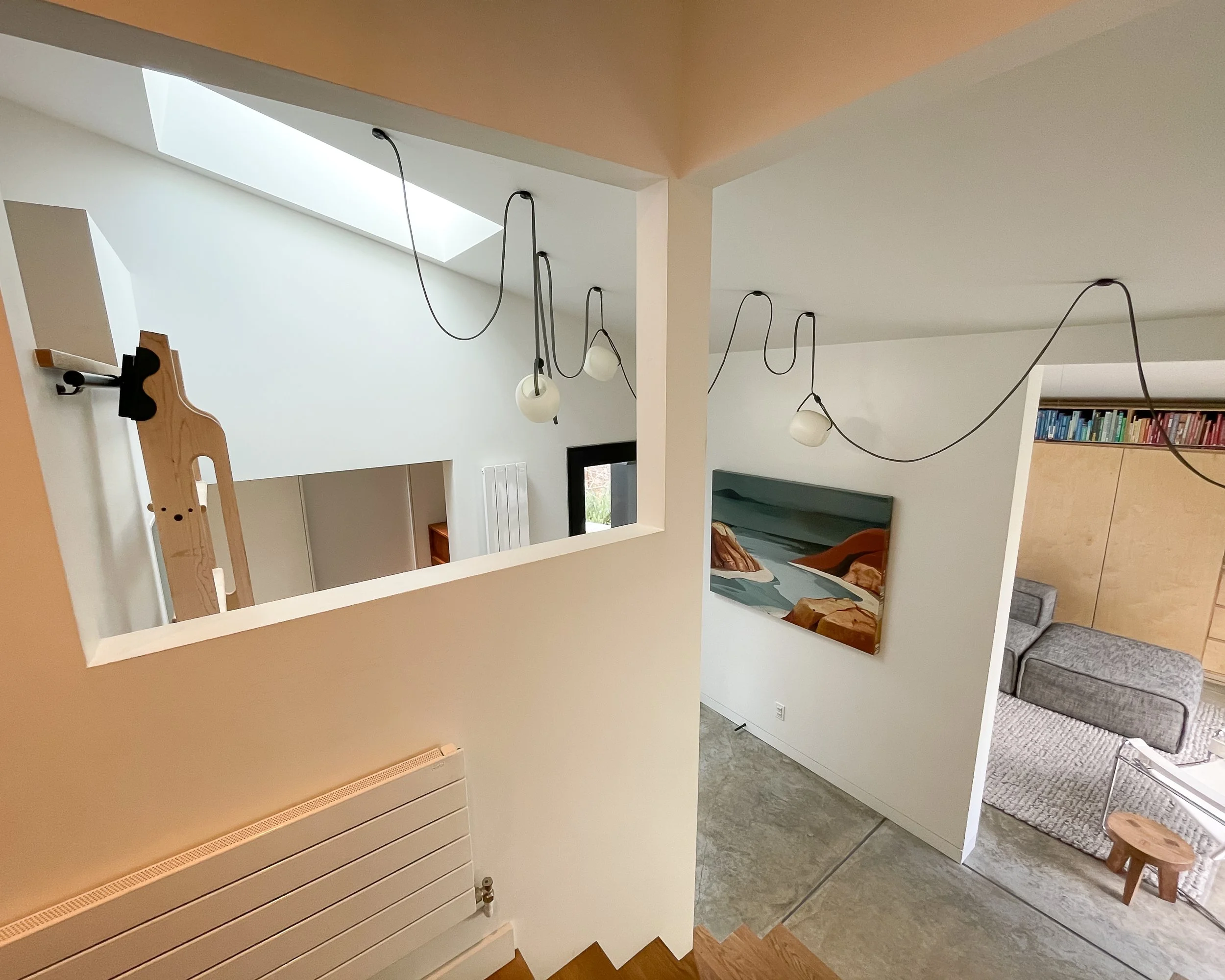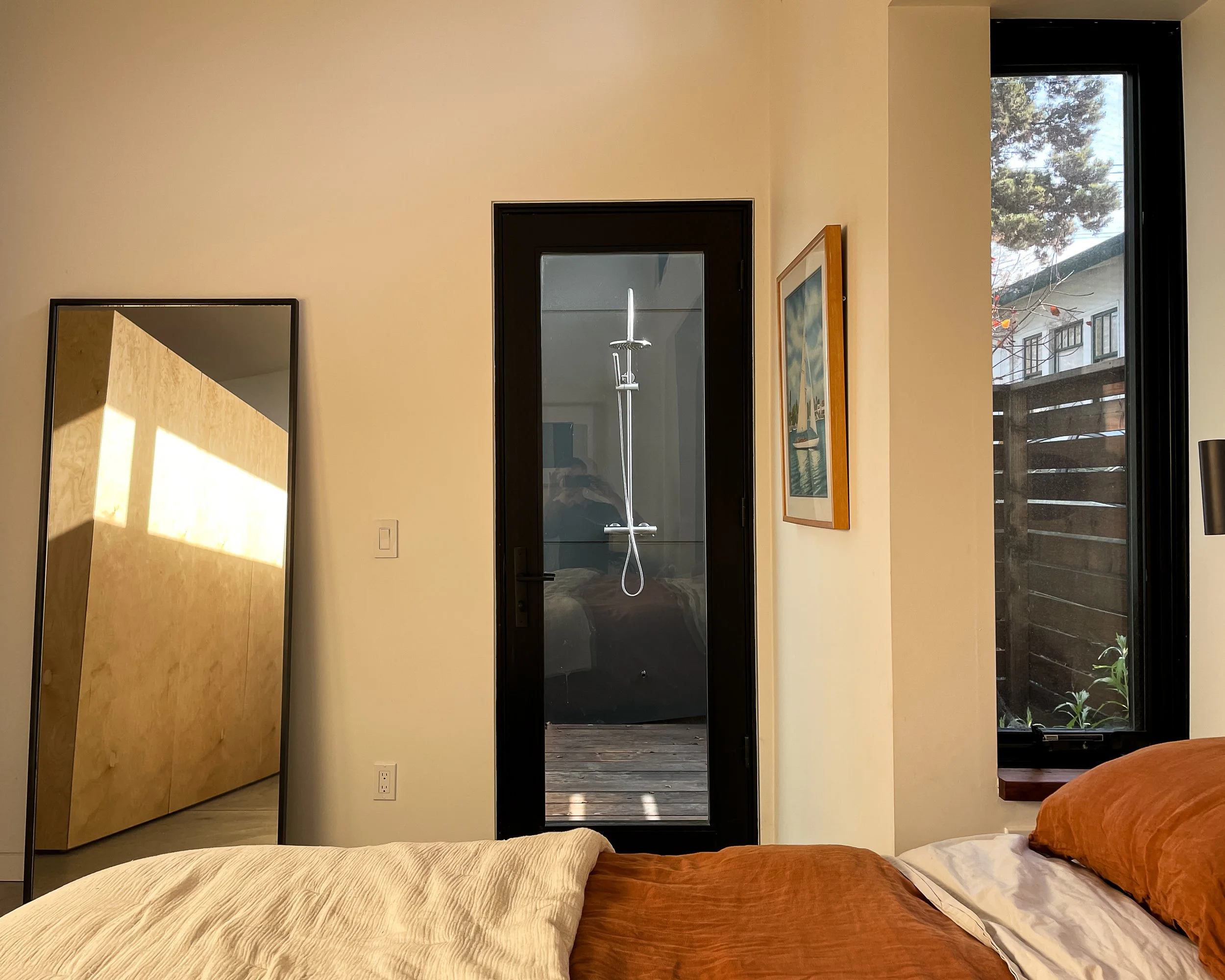Daylight
Many design strategies can help connect you to your place, but one of the most powerful is designing for daylight. Daylight, in all its constantly changing forms, is critical to our wellbeing. Besides the beauty we see in it and the function we gain from a well-lit space, experiencing daylight helps steady our natural circadian rhythms. By gradually changing across the course of the year daylight also grounds our minds in the seasonal rhythms of our local ecosystem.
Daylight across the day and year
“Architecture appears for the first time when the sunlight hits a wall. The sunlight did not know what it was before it hit a wall.”
– Louis Kahn
We experience daylight in architecture when that light hits a surface, not when it enters the building. Good daylight design is not a function of having big windows, it’s about crafting what the daylight touches and when. People often think that daylight and views are mutually exclusive with privacy, but that isn’t necessarily true.
In this example the bedroom addition gets beautiful daylight throughout the day and the year while providing privacy from the neighbor’s house just 15 ft away. High south-facing clerestory windows under overhanging eves let in direct winter light that bounces off the ceiling. Windows and doors in corners against perpendicular walls bounce and diffuse light into the space while restricting views from the outside.




